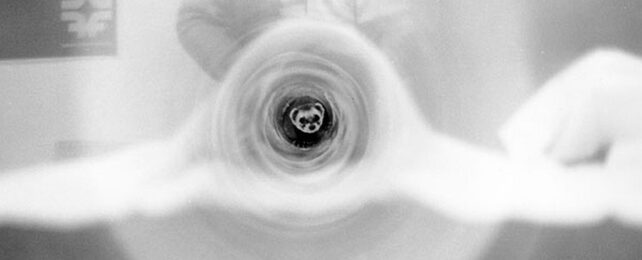
Yes, Physicists put a Ferret in a Particle Accelerator.
Share
Decades ago, when laboratory regulations were not as strict as they are today, physicists faced a puzzling challenge at what is now known as Fermilab. Back in 1971, the Main Ring particle accelerator was freshly built, and the excitement to test its capabilities was palpable.
This impressive $250 million accelerator consisted of a 4-mile-long tube with 1,014 powerful magnets, all set to steer and accelerate protons to incredible energies. However, within a few months, the physicists encountered a persistent issue – magnets were shorting to the ground, causing significant disruptions.
After careful investigation, the culprit was identified – tiny metal shavings left inside the accelerator were to blame. Removing these shavings from the narrow 6.4-kilometer tube seemed like an impossible task. That's when physicist Ryuji Yamada had a bright idea – use a magnet to pull the shavings out.

But the question remained, who would perform this "magnetic cleaning" task? Enter the ingenious British physicist Robert Sheldon, who drew inspiration from ferrets used in hunting rabbits. Sheldon's brilliant idea was to employ a real ferret to run through the accelerator's tube, just like it would in a rabbit hole.
Wally Pelczarski, the Main Ring's designer, made arrangements to obtain a small ferret named Felicia. This adorable 15-inch-long creature was perfectly suited for the job. With a diaper to prevent any mishaps and a leather harness, Felicia was ready for her tunnel-cleaning adventure.
The team trained Felicia to navigate through the dark tunnels while wearing the harness, with a string attached to guide her path. As she scampered from one end of the 300-foot sections to the other, she received delicious treats as a reward. A cleaning-fluid-soaked swab was tied to the string, collecting the metal shavings as Felicia made her runs.

Thanks to Felicia's remarkable efforts, the scientists made significant progress in cleaning out the troublesome shavings. However, as time went on, the researchers required more advanced solutions, and engineer Hans Kautzky developed a new method using Mylar disks and compressed air.
Though Felicia retired after a dozen or so runs, she remained cherished by the scientists at Fermilab. Sadly, she passed away in May 1972, leaving a furry legacy in the history of particle accelerator maintenance.
Ferrets may not be cleaning particle accelerators anymore, but their unexpected role in scientific research is a testament to the inventive and creative ways humans can solve complex problems. Felicia, the little ferret with a big impact, will always be remembered as a vital part of scientific ingenuity at Fermilab.
ARSE Jnr
The section where we explain the above to 5-year-olds (and Flat Earthers).
Once upon a time, there was a big machine called a particle accelerator. It had lots of magnets inside to make tiny particles go really fast. But oh no, some tiny metal pieces got stuck inside, causing trouble!
The scientists tried their best to fix it, but it was hard because the tube was so small. Then, they had a fantastic idea! They asked a special furry friend called Felicia to help.
Felicia was a cute and clever ferret. With a tiny harness on her back, she bravely ran through the tube, and guess what? She collected all the pesky metal pieces, like a little hero!
Everyone cheered for Felicia, and she got yummy treats as a reward. She became famous for her amazing work at the big machine. Felicia helped the scientists very much, and they loved her so much!
As time went on, the scientists found other ways to clean the machine, so Felicia retired. But she will always be remembered as the furry superstar who saved the day with her special talent. Yay for Felicia, the super ferret! 🌟
You’ve come this far…
Why not venture a little further into A.S.S. - our exclusive Australian Space Society.
And keep thrusting Australia into the deep unknown…
#Space_Aus




